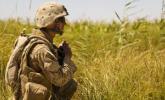 |
 |
"Afghanistan's Troop Deficit Problem" (Council on Foreign Relations)

"Afghanistan's Troop Deficit Problem"
Council on Foreign Relations, September 9, 2009
Interviewee: Dr. Kimberly Kagan, Interviewer: Greg Bruno
To read the full interview, please click here
Excerpt
The size and scope of the U.S. mission in Afghanistan has stirred vigorous debate in Washington. As casualties mount and costs increase, some analysts are calling on President Barack Obama to scale back the U.S. commitment. But Kimberly Kagan, president of the Institute for the Study of War, a Washington think tank, says downsizing the U.S. force presence in Afghanistan would be a major mistake. A U.S. pullout today, she says, would create a power vacuum providing terrorist groups "an opportunity to reassert themselves within Afghanistan." Kagan, who advised commanding Gen. Stanley A. McChrystal on his recent strategy review, says the better strategy is adding to the U.S. military presence, especially in population centers. "There are too few troops on the ground to be able to clear and hold villages that are essential to the enemy, essential to the government, and essential to our forces," she says.
Late last week, German forces called in an air strike on two hijacked fuel tankers, a strike that apparently killed a number of Afghans, prompting some to question whether new rules (PDF) governing coalition use of air power had been followed. But more importantly, the episode has also exposed a rift in U.S.-NATO operational tactics. How significant are these differences between coalition members?
What's so interesting about the conflict in Afghanistan is that very clearly there are folks on the ground who are conducting operations, who are frustrated with the circumstances in which they fight, who are frustrated with the lack of resources, and who are really trying to figure out how to achieve their objective. [But] what I found ... being able to talk to Americans and non-Americans is that actually there was a fair degree of convergence by the folks operating on the ground about what kinds of problems that the coalition faces and what we've needed for success. These discussions of friction between American and coalition forces are sometimes discussions about frictions between headquarters, rather than a discussion of friction between the folks who are fighting.
Underlying the discussion is a broader debate on troop numbers. The White House is reportedly considering adding more troops to the war effort. How might adding troops to an eight-year-old war effort bring about stability?
Although I served on General McChrystal's strategic assessment team, I can't speak for him and have not seen the confidential review [delivered to his superiors last month]. What I can say is that there are too few troops on the ground in Afghanistan to conduct the kinds of counterinsurgency operations that the situation merits. There are too few troops on the ground to be able to clear and hold villages that are essential to the enemy, essential to the government, and essential to our forces. This has meant that we are either in too few places or, in most cases in Afghanistan, our troops are spread too thinly. This is a problem that we saw in Iraq in 2006 that was rectified with a surge in troops that created the kinds of force densities needed on the ground to secure a village or a neighborhood. It allowed commanders to go door to door to talk to people and develop the kinds of trust relationships that ultimately allow our troops to figure out who the enemies are, deter them from participating in bad activity, and protect the population from harm should they ultimately turn in the bad people.
We have to recognize that we haven't actually been pursuing a counterinsurgency strategy that aggressively in Afghanistan. We have not ever had the troop densities to conduct the kinds of operations that were quite successful in Iraq. When we look at why new troops would matter, the first thing we have to understand is that it's not just a question of more troops, but rather a question of what those troops allow you to do on the ground that you haven't been able to do before. When it comes to clearing and holding, there's been a lot of talk of that, and a lot of it tends to [try to] do that with too few forces....
During a recent briefing (PDF) at the Brookings Institution, you said that American and coalition forces have been stationed in the wrong areas, executing the wrong missions, and not protecting the population like they did in Iraq. What did you mean?
There is some value to being in some of the border posts in and along certain stretches of the border [with Pakistan], but what we really need to focus on are the populated areas and seeing to it that the population turns away from the insurgency and that we drive the insurgents into remote areas. As in Iraq, we need to conduct a well-sequenced campaign to pursue the insurgents until they have minimal impact on the way in which daily life and governance are proceeding. We saw General [Raymond T.] Odierno in Iraq conduct a pretty magnificent set of operations to accomplish this objective over the second half of 2007 and the first month of 2008. I don't think that can be replicated one for one in Afghanistan, but it does remind us that there is value to driving the insurgents away from the population. What's key here is that we secure the populated areas that are important to us, to the enemy, and to the government....
To read the full interview, please navigate to the Council on Foreign Relations website.